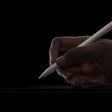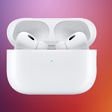Apple named its next-generation version of the Mac operating system High Sierra because it's designed to improve macOS Sierra through several major under-the-hood updates. While most of what's in High Sierra isn't outwardly visible, there are some refinements to existing features and apps like Safari, Photos, Siri, FaceTime, and more.
We went hands-on with the High Sierra beta to give MacRumors readers a quick idea of what changes and improvements to expect when the software comes out this fall. Check out the video below to see what's new.
Some of the biggest app changes are in Photos, which has a persistent side bar, editing tools for Curves and Selective Color, new filters, options for editing Live Photos, new Memories categories, improved third-party app integration, and improvements to facial recognition, with the People album now synced across all of your devices.
Safari is gaining a new autoplay blocking feature for videos, Intelligent Tracking Prevention to protect your privacy, and options for customizing your browsing experience site-by-site, while Mail improvements mean your messages take up 35 percent less storage space.
Siri has a more natural voice, just like on iOS 11, and can answer more music-related queries. iCloud Drive file sharing has been added, and in High Sierra and iOS 11, all of your iMessage conversations are saved in iCloud, saving more storage space.
When installing High Sierra, it will convert to a new, more modern file system called Apple File System or APFS. APFS is safe, secure, and optimized for modern storage systems like solid-state drives. Features like native encryption, crash protection, and safe document saves are built in, plus it is ultra responsive and will bring performance enhancements to Mac.
APFS is accompanied by High Efficiency Video Encoding (HEVC) which introduces much better video compression compared to H.264 without sacrificing quality. The other major under-the-hood update is Metal 2, which will bring smoother animations to macOS and will provide developers with tools to create incredible apps and games.
Metal 2 includes support for machine learning, external GPUs, and VR content creation, with Apple even providing an external GPU development kit for developers so they can get their apps ready for eGPU support that's coming to consumers this fall. Apple is also working with Valve, Unity, and Unreal to bring VR creation tools to the Mac.
macOS High Sierra will run on all Macs that are capable of running macOS Sierra. For a more detailed overview of what's included in the update, make sure to check out our macOS High Sierra roundup.



















